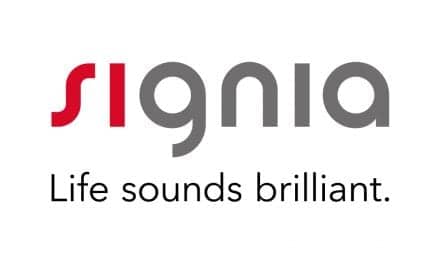Tech Topic | October 2020 Hearing Review
By Laura Winther Balling, PhD; Oliver Townend, BSc; Lasse Lohilahti Mølgaard, PhD, and Wendy Switalski, MBA, AuD
Expanding hearing care outside the walls of the clinic requires solutions that involve the hearing care professional as well as apps that empower the users. Widex Remote Care provides a comprehensive solution for the hearing care professionals working remotely, with access to all fitting functionality, while Widex apps help hearing aid users personalize their sound in the moment. Data from the AI-functionality in Widex apps show how users react to changes in their environment, including major ones like the COVID-19 crisis.
These days, the reasons to expand hearing care outside the clinic are only too obvious, but there are in fact many drivers for hearing care professionals (HCPs) to do so: Many hearing aid users are accustomed to being able to fix things online or may find it difficult to get to the clinic due to work, illness, or distance. Moreover, empowering the user through a complete hearing solution may result in happier users, fewer returns, and fewer fine-tuning visits.
As HCPs and manufacturers of hearing aids, we easily fall into the trap of focusing exclusively on the hearing aids that we fit and produce. It is much more appropriate, however, to consider the entire hearing solution as part of hearing rehabilitation, including fitting software and hearing aid apps on the same level as hearing aids and accessories. We focus here on software and apps as essential parts of the hearing solution in all cases, but with a special role to play for expanding hearing care beyond the clinic. Crucially, all solutions are centered around the user, optimizing their sound or helping them do so themselves.
Expert Audiology at a Distance
A prerequisite for hearing care beyond the clinic is, of course, telehealth solutions. The Widex Remote Care solution fulfills this need with the Remote Link end-user app, which is integrated with Compass GPS™ so that the HCP can use GPS as usual. Thanks to the Remote Link device that the hearing aid user wears during remote sessions, the HCP can remotely program all wireless Widex hearing aids, whether they have Bluetooth connectivity or not. The HCP and the end user communicate through the Remote Link app.
In addition to working with practically the entire hearing aid portfolio, the Widex Remote Care solution has the advantage of providing full access to all functionality in the Compass GPS fitting software. In other words, there are no restrictions due to the fact that programming is remote—which is particularly useful in situations where the user and HCP do not have a choice between remote and physical fitting sessions. This full functionality includes two important fitting components:
- The Sensogram which can be used to estimate hearing thresholds remotely, and
- The ServiceTracker which evaluates receiver and microphone functions and internal noise in the hearing aid, allowing the HCP to verify that the hearing aid works as it should.
While the Widex Remote Care functionality has been available for over a year, it has—like telehealth solutions more generally—increased in relevance recently. For the general population, there is evidence that telehealth solutions are likely to be used,1 but since hearing aid users are generally older and potentially less used to digital services, it is an interesting question whether hearing care is different. This was investigated in a survey conducted in May 2020.2
Among the 189 Widex hearing aid users responding to the survey, as many as 39% have experience with telehealth services, and 58% are likely to access healthcare services remotely. These numbers are lower than those for the general population,1 but they remain substantial. Most interestingly for the future of telehealth services, respondents are equally split between those who are very likely to continue using telehealth services after restrictions have been lifted (34%), those who are unlikely to do so (33%), and those who are undecided (32%). This means that two-thirds of hearing aid users in the survey are candidates for the continued use of remote solutions, and although the question is concerned with telehealth generally, it is likely to apply also to remote hearing care, given the right solution.
These numbers indicate that Remote Care has a role to play as a measure during coronavirus restrictions and beyond. This is also reflected in the reasons survey respondents give for continuing to use telehealth services: In addition to 37% wanting to reduce the risk of COVID-19 infection, 34% mention convenience and time-saving, and 20% feel telehealth helps them stay in close contact with their healthcare provider. This is in line with results of a previous survey on Widex Remote Care,3 where hearing aid users found it satisfying, convenient, and easy to use Remote Care, and indicated that it was important to them to have access to remote services. The HCPs participating in the same survey also found the system easy to use and were satisfied with the process and outcome; moreover, they agreed that remote sessions would save both them and their patients time in the future.
All in all, Widex Remote Care provides a comprehensive solution for expert audiology outside the clinic, with access to all fitting functionality for all hearing aids (except the CIC-M). It provides safety for groups at risk, convenience for both the active and the housebound, and the chance for the HCP to understand better the real-life hearing of the hearing aid user.
Empowering the Wearer
Another important component for successful hearing care outside the clinic is empowering the hearing aid wearer to take control of their hearing solution in everyday life. For that, apps are central tools that allow the user control over the hearing aid settings, ranging from simple adjustment of volume to specification of directional focus and creation of personalized programs. In the Widex portfolio, the ToneLink™ app—which uses acoustic remote control through brief, very high-frequency tones—works with all Widex hearing aids, while the more advanced Widex MOMENT™ app is available for Bluetooth hearing aids in the new hearing aid product line.
The Widex MOMENT app
The Widex MOMENT app includes a whole range of tools for personalization of sound, such as separate adjustments of left and right volume, adjusting the equalizer settings directly or through the artificial intelligence (AI) in SoundSense Learn, and saving the resulting individualized settings as personal programs.
Just like user testing is critical to hearing aid development, it is also an integral part of app development. The Widex MOMENT app has undergone extensive testing both during development and for the final version to ensure that it fulfills the user’s needs and is easy and attractive to use. This includes for instance a test with 8 hearing aid users who completed a range of tasks before rating the app on the SUPR-Q scale of usability, loyalty, and attractiveness on scales from 1 to 5 (with 5 being the best rating). For all three constructs, scores ranged from 4.7 to 4.9, with an overall SUPR-Q score of 4.8—near perfect on a 5-point scale. Additionally, participants indicated their agreement with the statement “The app has all the functionality I need in a hearing aid app” on a scale from 1 (Strongly disagree) to 5 (Strongly agree); the results showed average agreement of 4.9, indicating that the app is a good tool for empowering the hearing aid user.
SoundSense Learn
A unique feature of Widex hearing solutions is SoundSense Learn (SSL) which is found in the EVOKE and MOMENT apps. SSL uses AI to help the user adjust the sound in a simple but powerful way: The user indicates their degree of preference in a series of A-B comparisons of sound settings (Figure 1), and the AI algorithms use this input in real time to predict settings that will optimize the user’s satisfaction in the specific situation.4,5 The resulting settings may be saved as a personal program for later use.

In addition to many reports of SSL helping users in real life, there is also evidence from double-blind comparisons that SSL helps users improve sound quality and listening comfort.6,7 Additionally, in a survey of SSL users,8 72% responded that they were able to improve a listening situation with SSL and 80% would recommend the feature to others.
So, although the expert fitting of Widex devices works for most people in most situations, SSL helps users in those specific situations where the automatic steering of the hearing aid does not match their exact listening intentions. Enabling the users to address their hearing problems in such situations means that fine-tuning may be less necessary and that isolated problems are less likely to add up to general dissatisfaction.
SSL also provides anonymous data that can guide the development of future hearing solutions—and show us group-level patterns in how the app is used. There are many interesting aspects to explore in these data.
Figure 2 demonstrates the changes and developments in the first half of 2020 that clearly show the effects of lockdown on users’ hearing lives. When a user creates a program, the first step is to indicate their environment and listening intention in the moment. Figure 2 plots the environment in which new SSL programs were created. They are categorized into six different types to give a clearer overview, grouping “Car” and “Transport” together as “Transport,” “Nature” and “Urban” as “Outside,” and “Cinema,” “Classroom,” “Large hall,” and “Noisy venue” as “Inside public.” The figure shows the proportion of programs falling into each category as a function of time.

The first thing to notice in Figure 2 is a marked shift in proportions between early and late March, exactly coinciding with the introduction of lockdown measures in large parts of the world. The shift covers different patterns for three different groups of environments. Broadly speaking, home and outside environments increase in proportion, work and transport stay approximately the same, and restaurants and other inside public venues decrease. We are looking here at the height of each colored strip, corresponding to a category, in a given time period, not their absolute position on the vertical axis.
In slightly more detail, Home (in blue) is the most frequent environment throughout the period, but becomes even more so from early March, inceasing from around 50% to almost 75%. The preponderance of home environments probably reflects two facts: Firstly, many hearing aid users spend a majority of their time at home, and, secondly, home environments are relatively easy ones in which to create personal programs. Outside locations (in purple) also increase from late March relative to early in the year, indicating users spending more time out of doors, possibly in response to other activities being unavailable.
The reverse is true for programs created in restaurants (in green). Restaurant programs made up quite a large proportion of programs early in 2020 (and before), probably due to the fact that restaurants often represent difficult listening situations. By late March, restaurant programs had almost disappeared, and were only slowly coming back in the following months. Inside public venues (in yellow) show a somewhat similar, though not quite so extreme, development.
Insights from the Empowered Wearer
Finally, for a hearing solution to be complete, all the different elements need to be brought together, so that the adjustments made by the user are visible and useful to the HCP. This is the purpose of the Real Life Insights provided by Compass GPS, where the HCP can see the settings and use of personal programs that their patient has created. This enables the HCP to get closer to the real-life situations that the end user experiences, and to use this knowledge for fine-tuning and to strengthen dialogue with the user. As such, it complements Widex Remote Care, which also allows the HCP unique insights into the end user’s life. Importantly, it all comes together because Real Life Insights, like all other features in Compass GPS, is also available when working remotely.
Conclusion
By connecting hearing aids, software, and apps, Widex delivers a complete hearing solution that both empowers users in real life and informs HCPs back in the clinic. This is all done with the aim of delivering the most natural and personalized sound experience, even when a face-to-face clinical appointment is not possible.

Correspondence can be addressed to Dr Balling at: [email protected].
Citation for this article: Balling LW, Townend O, Molgaard L, Switalski W. Expanding your hearing care beyond the walls of your clinic. Hearing Review. 2020;27(10):22-25.
References
- Reynolds KA. Survey: Telehealth on the rise, popular with patients. Medical Economics. https://www.medicaleconomics.com/view/survey-telehealth-rise-popular-patients. Published May 21, 2020.
- Henningsen L. WS Audiology white paper. Help seeking adults receptive to telehealth as complement to in-person care. https://issuu.com/widexusa/docs/remote_care_wsa_whitepaper_telehealth_survey_0720. Published 2020.
- Sonne M, Balling LW, Nilsson EL. Right at home: Remote care in real life. Hearing Review. 2019;26(4):22-28.
- Townend O, Nielsen JB, Balslev D. SoundSense Learn—Listening intention and machine learning. Hearing Review. 2018;25(6):28-31.
- Townend O, Nielsen JB, Ramsgaard J. Real-life applications of machine learning in hearing aids. Hearing Review. 2018;25(4):34-37.
- Jensen NS, Hau O, Nielsen JBB, Nielsen TB, Legarth SV. Perceptual effects of adjusting hearing-aid gain by means of a machine-learning approach based on individual user preference. Trends Hear. 2019;23.
- Jensen NS, Townend O. Machine learning in Widex EVOKE: Perceptual benefits of SoundSense Learn. Widex Press. https://bit.ly/3cBcQ2D. Published May 2019.
- Balling LW, Townend O, Switalski WC. Real-life hearing aid benefit with Widex EVOKE. Hearing Review. 2019;26(3):30-36.





